There aren’t a lot of cost-effective methods to move heavy things in your shop (or install an engine for that matter). Sure, a gantry crane of some sort will work nicely, but it’s not easily moved. Ditto with a chain lift.
That’s why a good old fashioned shop crane or “cherry picker” is almost always the tool of choice for most hot rodders and racers.
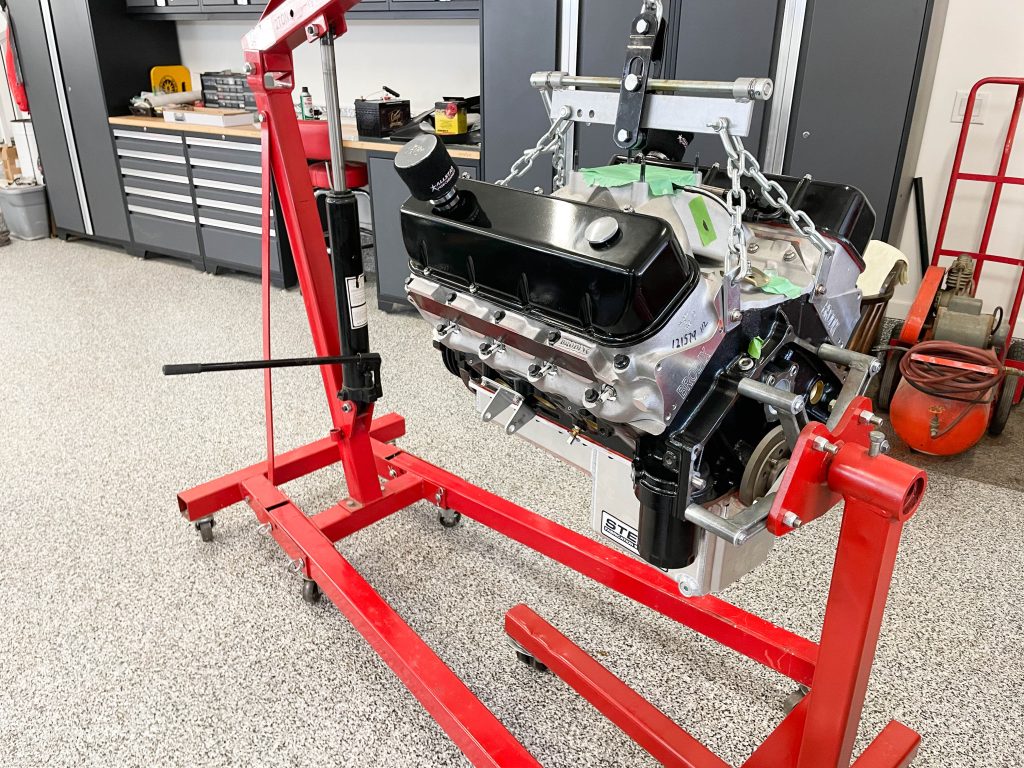
When dealing with cherry pickers, there are some considerations. For example, an easily folding crane certainly takes up far less space in the shop when it’s not in use. Another is the way the hydraulics work. Some are slow (which, in itself is a very good feature). But others have a rapid lift coupled with slow release. In some cases, this can prove advantageous.
Cranes that have a narrow footprint are usually less stable than those with a wide track. Some expensive cranes have adjustable leg spread widths. With a heavy engine hanging over the nose and with the crane extended a long ways, it’s not that difficult to upset some cranes. It’s not a great feeling when the crane starts to topple!
Fair enough, but let’s look at what the crane really must do for your application. And keep in mind, every situation can be different. There are no universal answers here, but there are some common questions you should ask yourself before buying a cherry picker.
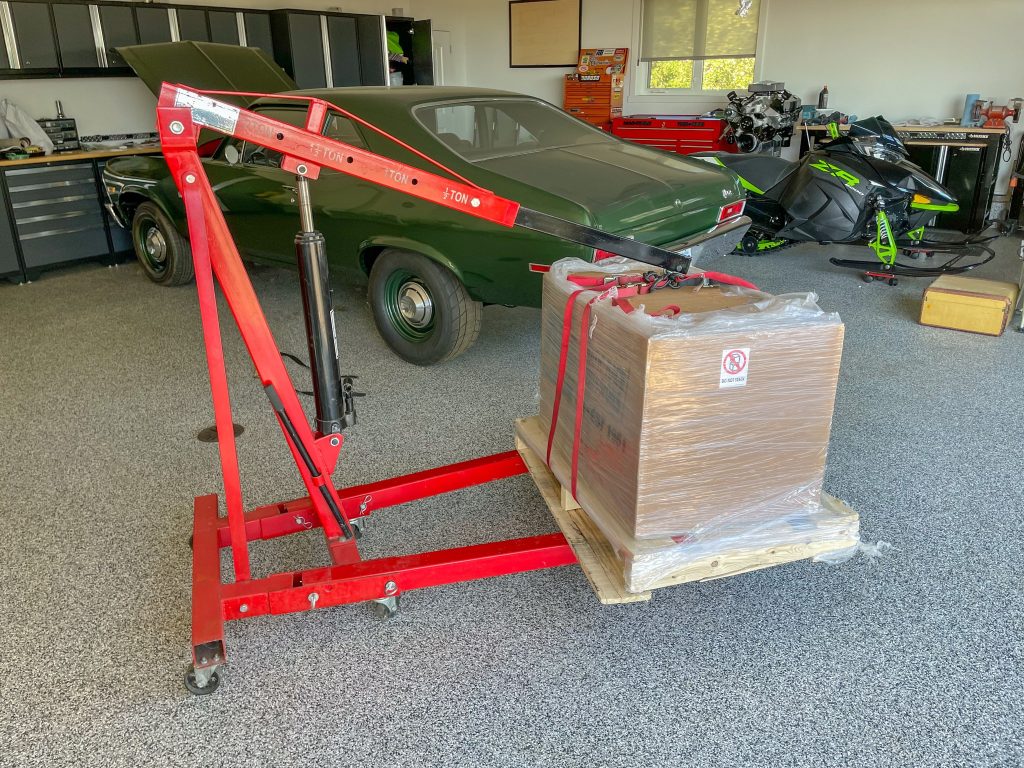
What is the Primary Job the Crane Must Complete?
Most of us use cherry pickers for one purpose: Moving engines in and out of the car and around the shop. But cranes are also useful for moving other heavy pieces around the shop. Case in point is the photo above: The cherry picker was used to lift a crated transmission off the back of a pickup truck. Some folks regularly use them for moving heavy wheels and tires (for example tractor’s dual wheels). The idea here is keep all of the potential jobs in mind before deciding upon a specific crane.
What Are You Lifting?
That sounds easy enough, but if you’re regularly lifting complete cast iron diesel engines you’ll need a far different crane than, say, someone who is regularly lifting aluminum small blocks. Most conventional shop cranes will lift a maximum of 2,000 pounds with the boom all the way in. When the boom is fully extended, the crane is often limited to 500 pounds. Swivel casters are also important, but keep in mind, most cranes are way more difficult to maneuver when there’s something like an engine hanging over the end.
Where Are You Using the Crane?
If you need to use the crane outdoors, then you’ll need something that can work in that environment (likely with larger diameter wheels and a wider footprint). If the cherry picker is used solely indoors, then conventional caster wheels will get the job done. Something else you should address is overall crane width. If you have to go through a shop doorway, keep the overall width of the crane in mind. It would prove frustrating if the crane can’t work in your environment.
How High Does it Need to Raise?
This is important. A crane that works perfectly for an early Mustang might not have sufficient lift to work on a one-ton dually. Similarly, look at the reach. Some cars have inherently long noses (vintage Monte Carlos are a good example). It is possible to run out of reach with some cranes. If that’s the case, you’ll have to remove and install the engine from the vehicle’s side. This obviously precludes installing the transmission with the engine, as using it out the side isn’t quite as easy as removing and re-installing it from the front.
How Limited is Your Shop Space?
This ties in with the previous comment about folding cranes. Many cherry pickers fold up, but some do not. If shop space is at a premium (and for most of us, it is), then the crane has to reside somewhere you won’t be regularly tripping over it. Some of the larger, heavier cranes don’t fold up, at least easily. Some come apart, but it takes some doing. Keep that in mind when shopping.
How Often do You Use the Crane?
If you use the crane to move an engine or two around annually or use it to unload a drum of race fuel once in a while, then you probably don’t need the most exotic crane on the market. But if you have a constant need for a cherry picker, it’s probably a good idea to weigh all of the features and benefits against costs. Just like anything else, you get what you pay for.
***
A quick trip to SummitRacing.com reveals a number of different engine hoists.
Some are conventional and inexpensive. Some are seriously heavy duty and, at the same time, more costly. We’ll take a look at some of the more common models:
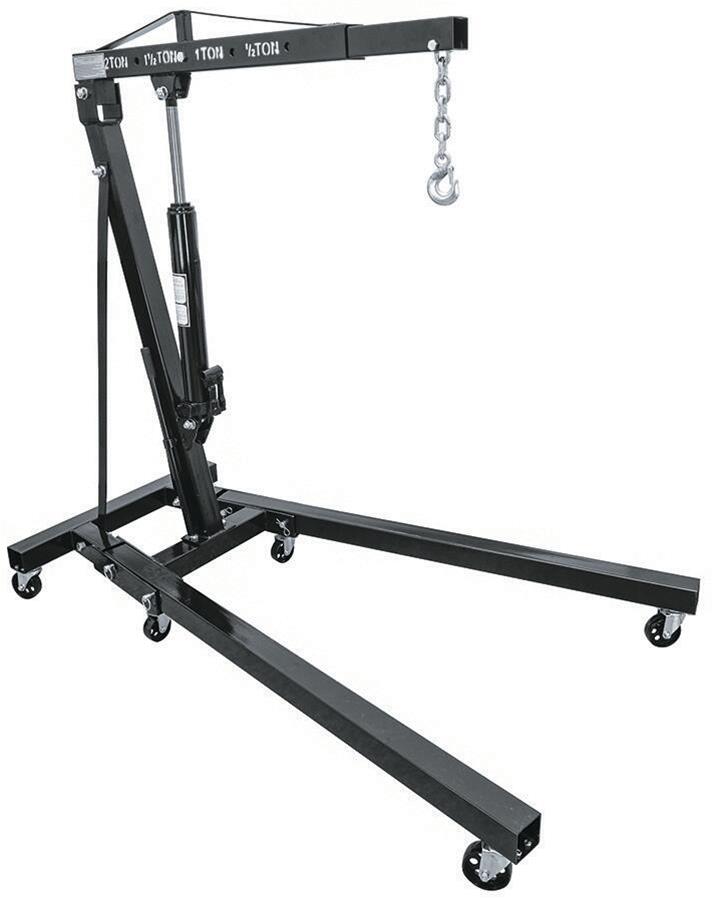
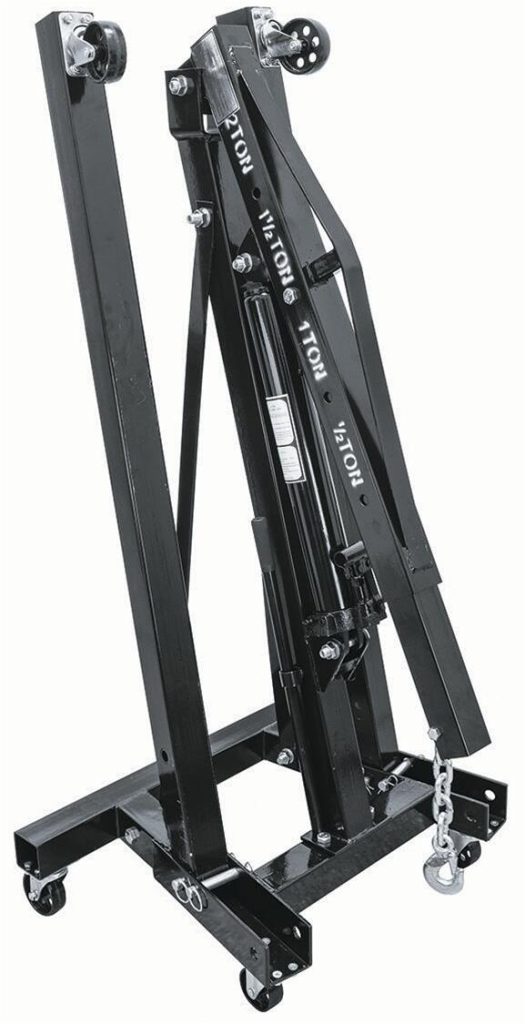
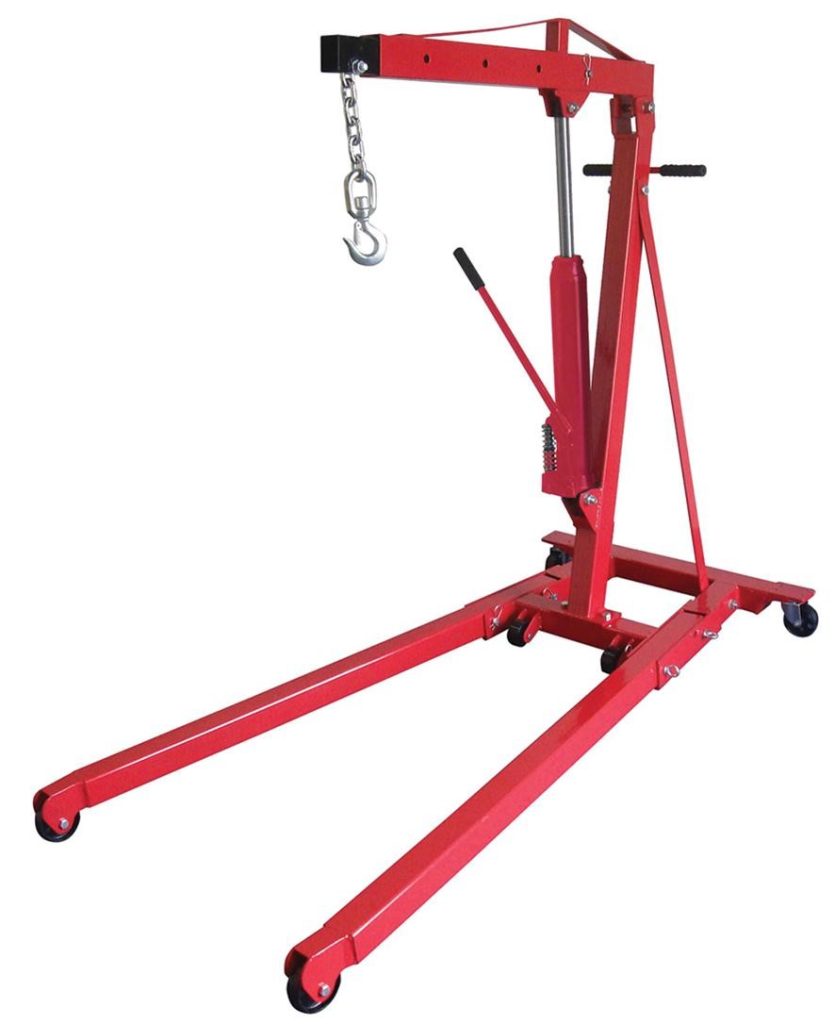
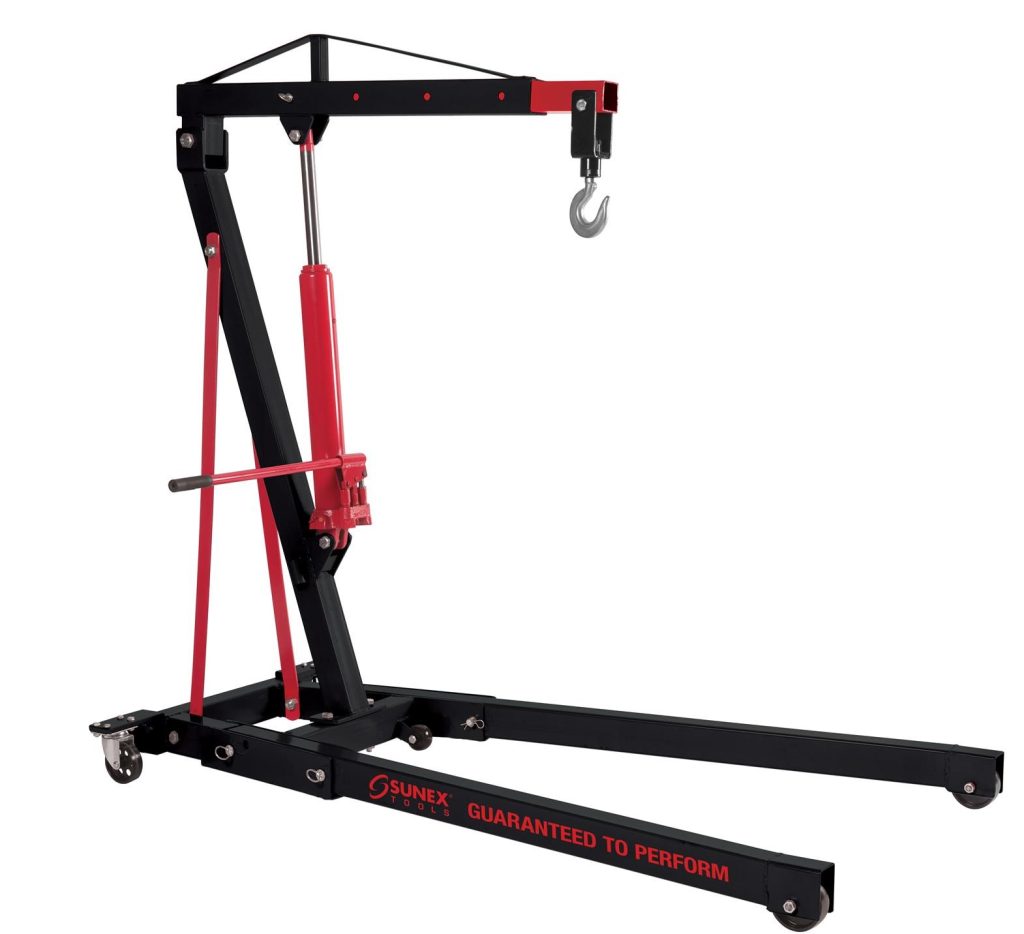
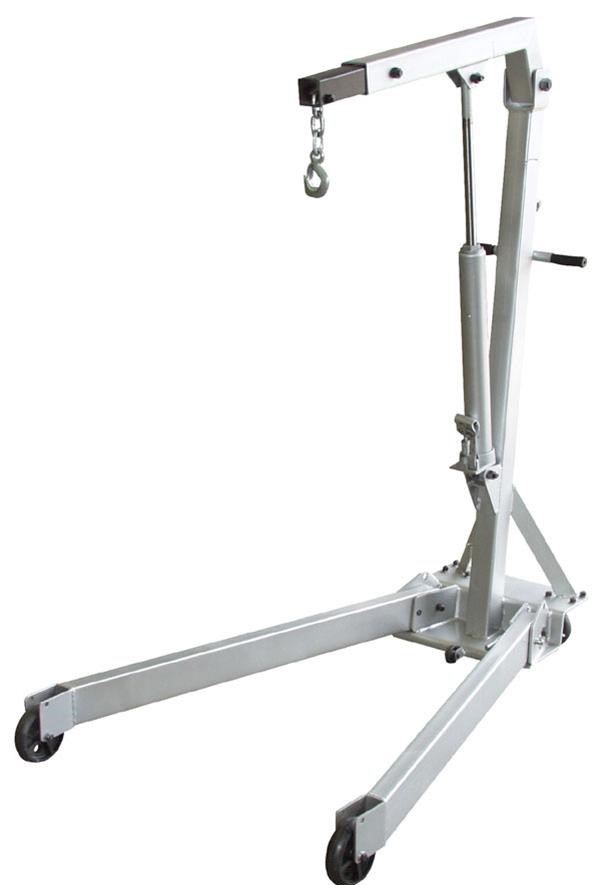
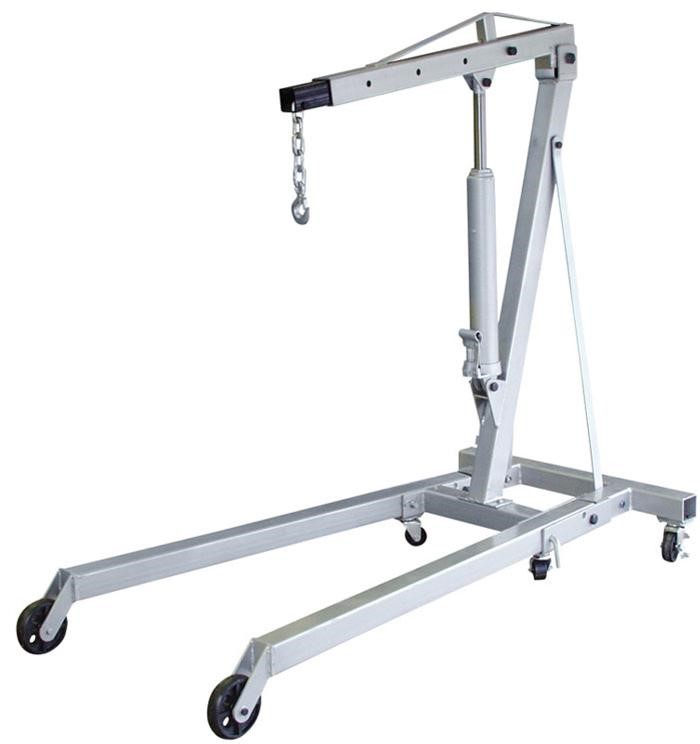


Comments